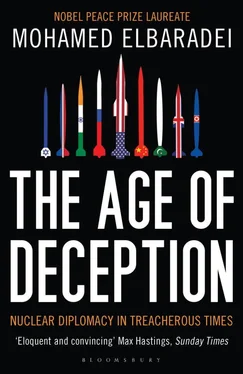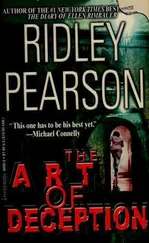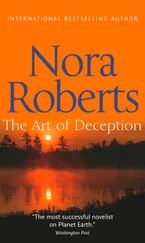Technically, there was no need for our people to stay in the country all the time; that would have been like watching grass grow. However, some Member States, including the United States, believed that our presence was important politically, so we maintained two or three inspectors in residence. Decent meals were available at the guesthouse for hard currency; but the inspectors were unable to get away from their immediate surroundings, so it was like being in a detention camp. We rotated inspectors every three to six weeks, to keep them from going stir crazy.
The discovery of discrepancies and plutonium concealment in North Korea was a success for the IAEA’s verification program. What is less clear, in hindsight, is whether the Agency’s request for a special inspection in 1993 was the right approach. We were fairly certain that North Korea would reject the request, and that a confrontation would be the most likely result. From past experience, we could have anticipated that the Security Council, charged under the IAEA statute with ensuring compliance, would not take strong action. Thus, the IAEA and the international community might have done better to continue negotiations with North Korea and push for incremental progress.
The only trump card at the North Koreans’ disposal was their nuclear capability; clearly, they would play it to the greatest possible effect. The regime’s belief that the United States was bent on its overthrow was a recurrent factor influencing the nuclear negotiations. Pyongyang did not place a high priority on the welfare of its people nor on the humanitarian impact of any potential repercussions from its nuclear activities; its sole priority was the survival of the regime. Accordingly, there was little to be accomplished by using penalties to apply pressure to North Korea, let alone the threat of force as an option: Seoul, just thirty kilometers from the border, could well be pulverized. In any case, it is the last time the Agency ever tried to resort to special inspections as a verification tool. We would remain limited in our ability to verify undeclared activities until the arrival of the Model Additional Protocol in 1997.
After the special inspections approach failed, the only sensible path available to the international community was gradually to rebuild trust with North Korea, and then try to buy out its nuclear option, keeping tensions to a minimum while waiting for the regime to change. This was what the Agreed Framework tried to achieve. However, that framework was ultimately undermined when the United States failed to live up to its commitments with North Korea, most notably by not delivering the promised power reactors. The North Koreans clearly read this as evidence of a lack of good faith on the part of the Americans.
The Korean experience can be seen as a textbook case of the shortcomings of treating only the symptoms of insecurity, instead of developing a comprehensive, long-term approach designed to defuse the causes of tension. Security guarantees and development assistance are always more effective than punitive measures that inevitably escalate the tension.
3
IRAQ, 2002 and After
A Needless War
By 2002, the security landscape had markedly altered. The September 11, 2001, attacks in the United States had changed many assumptions about the capacity of terrorists to stage complex, suicidal operations. Extremist groups had expressed specific interest in acquiring and using weapons of mass destruction. In response, the IAEA had overhauled and greatly expanded its programs for helping countries secure their nuclear materials to prevent illicit use. As an agency, we, too, had changed. A decade of dealing with challenges such as Iraq and North Korea had made us more resourceful and more confident. We had considerably more legal and technological verification tools at our disposal.
The landscape had been altered also by the Bush administration’s approach to nuclear arms control. In December 2001, Bush had unilaterally withdrawn the United States from the Anti-Ballistic Missile Treaty—a cornerstone of U.S.-Soviet nuclear détente since 1972. In May 2002, Bush and Putin signed the Strategic Offensive Reductions Treaty (SORT), an agreement referred to jokingly in diplomatic circles as “sort of” a treaty, because: (1) it included no verification of its pledged reductions in nuclear arsenals; (2) the reductions called for were not required to be permanent; and (3) withdrawal from the treaty required a mere three months’ notice.
To nuclear policy experts, the signals from these actions were clear. The United States was not serious about following through on its disarmament obligations under the NPT. Rather, it was intent on retaining and even reinforcing its privileged nuclear weapon status, with minimal accountability. At the same time, it was determined to come down harder on potential WMD proliferation by other countries.
This was the context in late 2002, when the crosshairs began to focus on Iraq. A rash of statements had appeared in speeches, political talk shows, and press articles. They ranged from hints to outright declarations that Saddam Hussein had ties to Al-Qaeda or that his hand had been present in the terrorist attacks of September 2001. Of specific interest to the IAEA were the U.S. and U.K. claims that they possessed conclusive evidence that the Iraqi leader had failed to dismantle his WMD programs. The Agency had been absent from Iraq since our hurried departure just before the 1998 Desert Fox bombing, which had severely limited our ability to stay current on developments there during the intervening four years.
President Bush was one of those making bold assertions. A speech in Cincinnati, Ohio, on October 2, 2002, was a typical example:
Eleven years ago, as a condition for ending the Persian Gulf War, the Iraqi regime was required to destroy its weapons of mass destruction, to cease all development of such weapons, and to stop all support for terrorist groups. The Iraqi regime has violated all of those obligations. It possesses and produces chemical and biological weapons. It is seeking nuclear weapons. It has given shelter and support to terrorism, and practices terror against its own people. The entire world has witnessed Iraq’s eleven-year history of defiance, deception and bad faith.
Later in the speech, Bush continued:
The evidence indicates that Iraq is reconstituting its nuclear weapons program. Saddam Hussein has held numerous meetings with Iraqi nuclear scientists, a group he calls his “nuclear mujahedeen”—his nuclear holy warriors. Satellite photographs reveal that Iraq is rebuilding facilities at sites that have been part of its nuclear program in the past. Iraq has attempted to purchase high-strength aluminum tubes and other equipment needed for gas centrifuges, which are used to enrich uranium for nuclear weapons.
With statements like this—replete with information that was inaccurate, unproven, and misleading—the United States began pressing openly for regime change.
The aggressive rhetoric was no empty threat: crippling sanctions had been in place for a decade; the United States and its allies had recently demonstrated, in Afghanistan, their willingness to take decisive military action. And indeed, the pressure on Iraq appeared to produce results. While denying that the country had rebuilt its WMD programs, Saddam Hussein wrote a letter finally inviting the UN weapons inspectors to return. After much discussion, on November 8, the Security Council unanimously approved Resolution 1441, authorizing a new round of Iraq inspections.
The action behind the scenes was both less coherent and more revealing. A good example was the process of drafting Resolution 1441. The initial draft was not made public. As formulated by the United States, it would have put the five permanent members of the Security Council squarely in the driver’s seat of the inspection process. [1] The shorthand reference to the five permanent members of the UN Security Council—China, France, Russia, the United Kingdom, and the United States—is the P-5. Not coincidentally, these also are the five countries named in the NPT as the possessors of nuclear weapons.
It proposed the use of military escorts to accompany the inspectors in the field, a departure from the past. It also proposed that representatives of the P-5 be part of the inspection teams, and worse, that the UN inspectors report their findings directly to the country that requested the inspection of a particular site or the interview of a particular Iraqi. In short, it suggested a return to the same orientation and mechanisms that had led to the discrediting of UNSCOM.
Читать дальше












